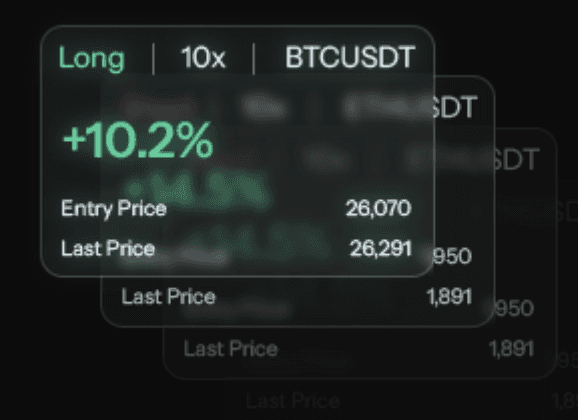Building a Trading Strategy with the Price Chart & Technical Indicators
Jul 20, 2023
Hello there, aspiring traders! We set out on a thrilling trip today to reveal the nuances of creating a reliable trading strategy while utilising the complementary strengths of price charts and technical indicators. Be ready; we're about to delve deeply into the world of strategic trading.
Familiarize Yourself with the Price Chart: Before we explore technical indicators, it is imperative to acquaint ourselves with the price chart. It acts as the market's compass, offering insightful information about numerous timeframes, such as daily, hourly, or minute charts.
Define Your Trading Goals: A clear destination is essential for every journey. Decide if you want to be a patient swing trader or a nimble day trader looking for immediate gains. Your method and indicator selection will be influenced by well defined goals.
Identify Critical Support and Resistance Levels: The trustworthy marks on your chart are support and resistance. They represent points where the price has previously encountered support or resistance. Identifying these levels will make it easier to decide where the best entry and exit locations are.
Embrace Simplicity with Efficacy: Simplicity is the key to a successful plan. The difficulty of a strategy does not always equate to success. Focus on a small number of reliable technical indicators that suit your trading style.
Use Moving Averages to Your Advantage: Moving averages (MAs) operate as a steadying influence, reducing market instability. They highlight patterns and possible trend reversals. To customise your strategy, experiment with other MA intervals, such as the 50-day and 200-day.
Utilize Oscillators for Momentum: Oscillators provide your approach momentum by alerting you to overbought and oversold conditions. Exploration of prominent oscillators like the Moving Average Convergence Divergence (MACD) and Relative Strength Index (RSI) is necessary.
Volume: The Silent Driver of Price Action: Analysis of trade activity in conjunction with price movement provides evaluation of trend strength and identification of prospective breakouts. OBV, or on-balance volume, is a powerful ally.
Experiment with Volatility Indicators: Indicators of market volatility like Bollinger Bands and Average True Range (ATR) can be quite helpful. They make it easier to define stop-loss levels and the proper position sizing while taking into account market conditions.
Thorough Backtesting - A Must for Success: Put your freshly developed approach through rigorous backtesting against historical price data before you start your trading adventure. Before engaging in real trading, this rigorous evaluation enables fine-tuning.
Conquering the Emotions at Sea: Even the most effective plans are seriously threatened by fear, greed, and rash actions. Establish unwavering discipline and stick to your trading strategy in the face of FOMO and FUD (fear, uncertainty, and doubt).
Managing Risk - Your Reliable Lifeboat: Even while no plan can guarantee constant performance, following strict risk management guidelines protects your money from choppy market conditions. Always make sure you only trade with money you can afford to lose.
Embrace Lifelong Learning and Adaptability: Markets always change, and your plan should too. Keep up with recent economic developments, market news, and fresh indicators. Your trading sail is being propelled by your ability to adapt.
Conclusion:
Now that you have a thorough understanding of price charts and technical indicators, you are well-equipped to navigate the turbulent waters of trading. Always keep in mind that developing a reliable trading strategy requires perseverance, commitment, and ongoing learning. With a firm hand, chart your route, and may the winds of fortune be ever in your favour. Good luck, my fellow traders! Cheers to trading!

Building a Trading Strategy with the Price Chart & Technical Indicators
Jul 20, 2023
Hello there, aspiring traders! We set out on a thrilling trip today to reveal the nuances of creating a reliable trading strategy while utilising the complementary strengths of price charts and technical indicators. Be ready; we're about to delve deeply into the world of strategic trading.
Familiarize Yourself with the Price Chart: Before we explore technical indicators, it is imperative to acquaint ourselves with the price chart. It acts as the market's compass, offering insightful information about numerous timeframes, such as daily, hourly, or minute charts.
Define Your Trading Goals: A clear destination is essential for every journey. Decide if you want to be a patient swing trader or a nimble day trader looking for immediate gains. Your method and indicator selection will be influenced by well defined goals.
Identify Critical Support and Resistance Levels: The trustworthy marks on your chart are support and resistance. They represent points where the price has previously encountered support or resistance. Identifying these levels will make it easier to decide where the best entry and exit locations are.
Embrace Simplicity with Efficacy: Simplicity is the key to a successful plan. The difficulty of a strategy does not always equate to success. Focus on a small number of reliable technical indicators that suit your trading style.
Use Moving Averages to Your Advantage: Moving averages (MAs) operate as a steadying influence, reducing market instability. They highlight patterns and possible trend reversals. To customise your strategy, experiment with other MA intervals, such as the 50-day and 200-day.
Utilize Oscillators for Momentum: Oscillators provide your approach momentum by alerting you to overbought and oversold conditions. Exploration of prominent oscillators like the Moving Average Convergence Divergence (MACD) and Relative Strength Index (RSI) is necessary.
Volume: The Silent Driver of Price Action: Analysis of trade activity in conjunction with price movement provides evaluation of trend strength and identification of prospective breakouts. OBV, or on-balance volume, is a powerful ally.
Experiment with Volatility Indicators: Indicators of market volatility like Bollinger Bands and Average True Range (ATR) can be quite helpful. They make it easier to define stop-loss levels and the proper position sizing while taking into account market conditions.
Thorough Backtesting - A Must for Success: Put your freshly developed approach through rigorous backtesting against historical price data before you start your trading adventure. Before engaging in real trading, this rigorous evaluation enables fine-tuning.
Conquering the Emotions at Sea: Even the most effective plans are seriously threatened by fear, greed, and rash actions. Establish unwavering discipline and stick to your trading strategy in the face of FOMO and FUD (fear, uncertainty, and doubt).
Managing Risk - Your Reliable Lifeboat: Even while no plan can guarantee constant performance, following strict risk management guidelines protects your money from choppy market conditions. Always make sure you only trade with money you can afford to lose.
Embrace Lifelong Learning and Adaptability: Markets always change, and your plan should too. Keep up with recent economic developments, market news, and fresh indicators. Your trading sail is being propelled by your ability to adapt.
Conclusion:
Now that you have a thorough understanding of price charts and technical indicators, you are well-equipped to navigate the turbulent waters of trading. Always keep in mind that developing a reliable trading strategy requires perseverance, commitment, and ongoing learning. With a firm hand, chart your route, and may the winds of fortune be ever in your favour. Good luck, my fellow traders! Cheers to trading!

Building a Trading Strategy with the Price Chart & Technical Indicators
Jul 20, 2023
Hello there, aspiring traders! We set out on a thrilling trip today to reveal the nuances of creating a reliable trading strategy while utilising the complementary strengths of price charts and technical indicators. Be ready; we're about to delve deeply into the world of strategic trading.
Familiarize Yourself with the Price Chart: Before we explore technical indicators, it is imperative to acquaint ourselves with the price chart. It acts as the market's compass, offering insightful information about numerous timeframes, such as daily, hourly, or minute charts.
Define Your Trading Goals: A clear destination is essential for every journey. Decide if you want to be a patient swing trader or a nimble day trader looking for immediate gains. Your method and indicator selection will be influenced by well defined goals.
Identify Critical Support and Resistance Levels: The trustworthy marks on your chart are support and resistance. They represent points where the price has previously encountered support or resistance. Identifying these levels will make it easier to decide where the best entry and exit locations are.
Embrace Simplicity with Efficacy: Simplicity is the key to a successful plan. The difficulty of a strategy does not always equate to success. Focus on a small number of reliable technical indicators that suit your trading style.
Use Moving Averages to Your Advantage: Moving averages (MAs) operate as a steadying influence, reducing market instability. They highlight patterns and possible trend reversals. To customise your strategy, experiment with other MA intervals, such as the 50-day and 200-day.
Utilize Oscillators for Momentum: Oscillators provide your approach momentum by alerting you to overbought and oversold conditions. Exploration of prominent oscillators like the Moving Average Convergence Divergence (MACD) and Relative Strength Index (RSI) is necessary.
Volume: The Silent Driver of Price Action: Analysis of trade activity in conjunction with price movement provides evaluation of trend strength and identification of prospective breakouts. OBV, or on-balance volume, is a powerful ally.
Experiment with Volatility Indicators: Indicators of market volatility like Bollinger Bands and Average True Range (ATR) can be quite helpful. They make it easier to define stop-loss levels and the proper position sizing while taking into account market conditions.
Thorough Backtesting - A Must for Success: Put your freshly developed approach through rigorous backtesting against historical price data before you start your trading adventure. Before engaging in real trading, this rigorous evaluation enables fine-tuning.
Conquering the Emotions at Sea: Even the most effective plans are seriously threatened by fear, greed, and rash actions. Establish unwavering discipline and stick to your trading strategy in the face of FOMO and FUD (fear, uncertainty, and doubt).
Managing Risk - Your Reliable Lifeboat: Even while no plan can guarantee constant performance, following strict risk management guidelines protects your money from choppy market conditions. Always make sure you only trade with money you can afford to lose.
Embrace Lifelong Learning and Adaptability: Markets always change, and your plan should too. Keep up with recent economic developments, market news, and fresh indicators. Your trading sail is being propelled by your ability to adapt.
Conclusion:
Now that you have a thorough understanding of price charts and technical indicators, you are well-equipped to navigate the turbulent waters of trading. Always keep in mind that developing a reliable trading strategy requires perseverance, commitment, and ongoing learning. With a firm hand, chart your route, and may the winds of fortune be ever in your favour. Good luck, my fellow traders! Cheers to trading!

Supercharge your trading game with Market Mapper today!




